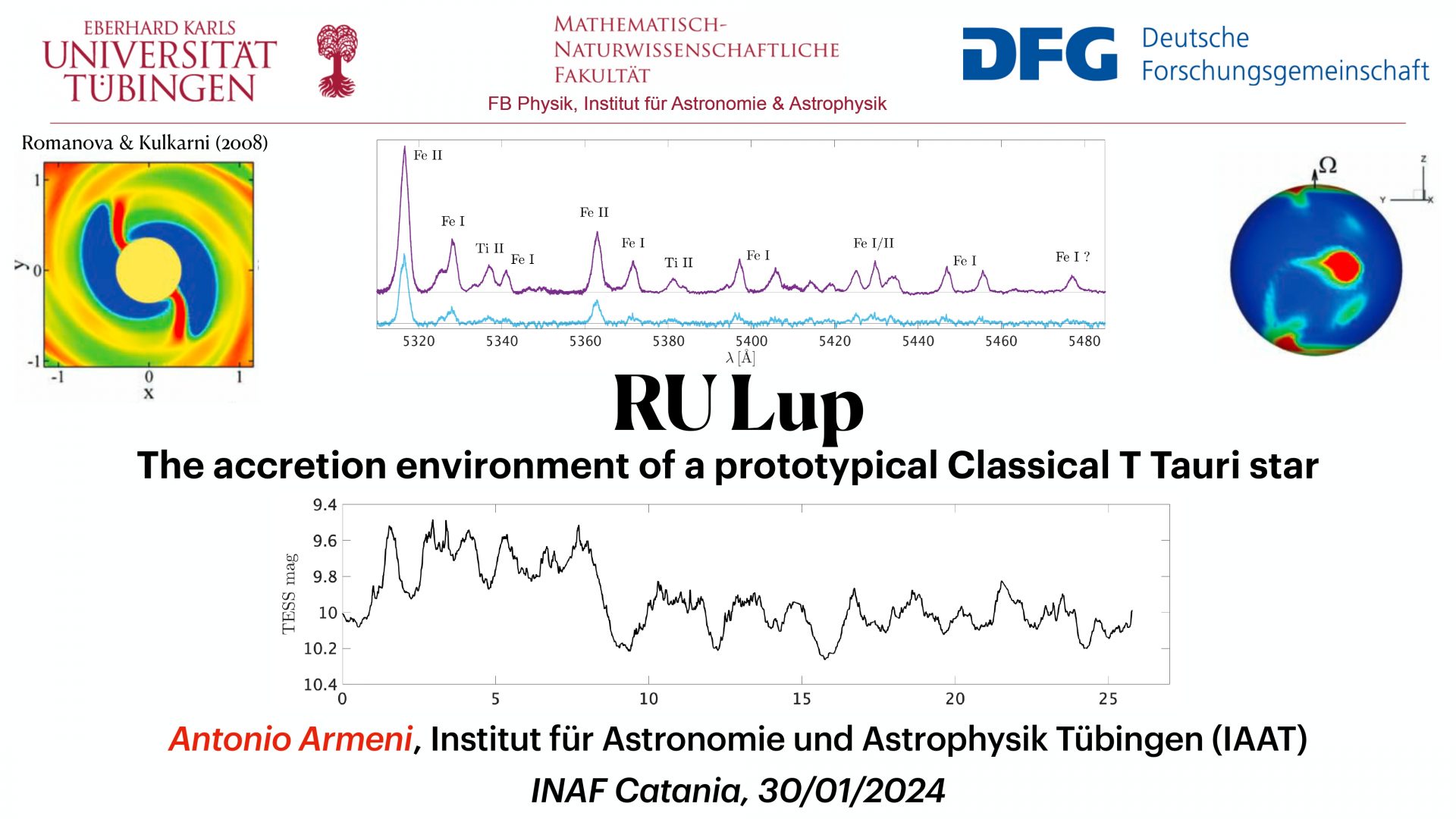
- Questo evento è passato.
RU Lup: the accretion environment of a prototypical Classical T Tauri star
Gennaio 30, 2024 @ 11:30 am - 12:00 pm

Recording: https://www.oact.inaf.it/seminars/
DATE: Tuesday, January 30, 11:30 a.m.
ORGANIZER: INAF OACT
LOCATION: AULA OVEST (INAF-OACT) + remote
Link for the remote audience:
https://meet.google.com/wvf-uwxo-oyj
SPEAKER: Dr. Antonio Armeni (Tuebingen University)
ABSTRACT:
While it is well established that Classical T Tauri stars accrete material from a circumstellar disk through magnetic fields, the physics regulating the processes in the inner (0.1 AU) disk is still not well understood. With its long observational history and its rich emission line spectrum, RU Lup is a prime example to study this environment.
RU Lup is a monitoring target within the ULLYSES survey for Classical T Tauri stars. Optical spectroscopic observations with CHIRON and ESPRESSO were obtained simultaneously with the two epochs of the ULLYSES monitoring program for RU Lup.
In this talk, I will discuss the main results obtained by analyzing this collection of data, supplemented by the two TESS observations and the archival AAVSO photometry of RU Lup.
Using the high resolution ESPRESSO spectra, we improved the measurements of the stellar parameters, especially the projected rotational velocity (vsini).
We determined the veiling fraction for the ESPRESSO spectra, showing that the veiling consists of two components: a continuum emission likely originating in the accretion shock and line emission that fills in the photospheric absorption lines.
We detected a periodic modulation in the narrow component (NC) of the He I 5876 line with a period that is compatible with the stellar rotation period, indicating the presence of a compact region on the stellar surface that we identified as the footprint of the accretion shock. Although the brightness of RU Lup changed drastically both on daily and yearly timescales, this region is overall stable over the 3 years covered by the observations.
An analysis of the high-cadence TESS light curves revealed quasi-periodic oscillations (QPO) on timescales shorter than the stellar rotation period. This suggests that the accretion disk in RU Lup extends inward of the corotation radius and the star accretes through a magnetic boundary layer (MBL). The rich metallic emission line spectrum of RU Lup might be characteristic of this accretion regime.
A few rules:
— in case of large in-person attendance, attendees may be asked to wear a face mask
— before joining, make sure you are using your institutional inaf.it account if you have one (otherwise we will grant you permission to join)
— please do not forget to mute your microphone and switch off your webcam when access the virtual room
— for questions leave a message in the chat, the answers at the end of the webinar
— the seminar will be recorded, so if you are interested in it, please contact us to get the link to the registration.